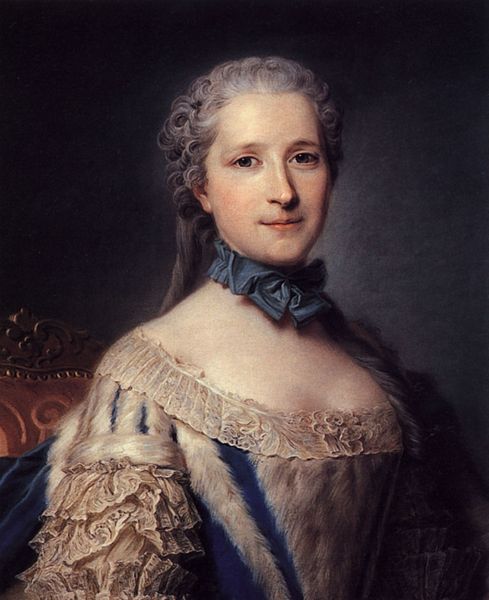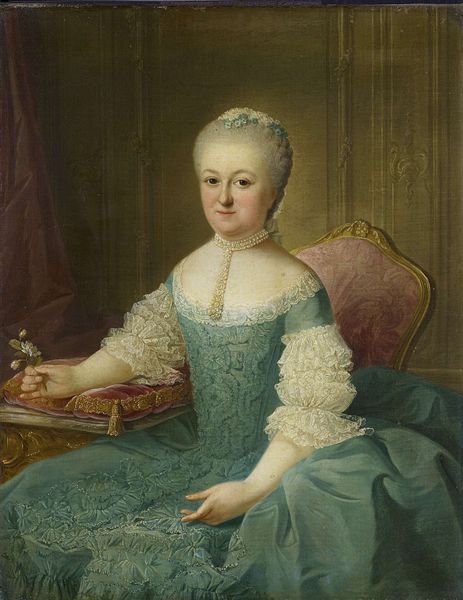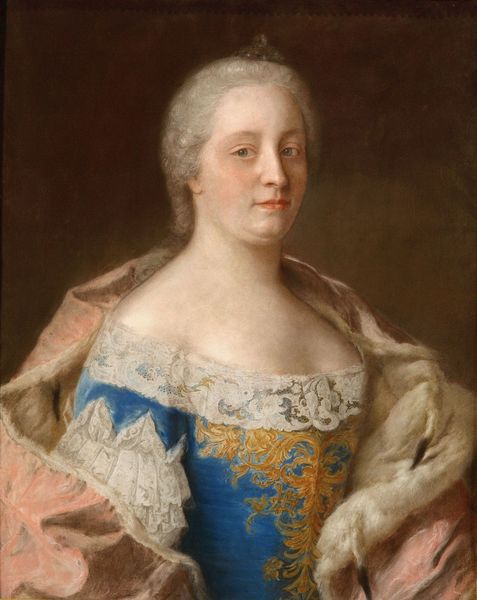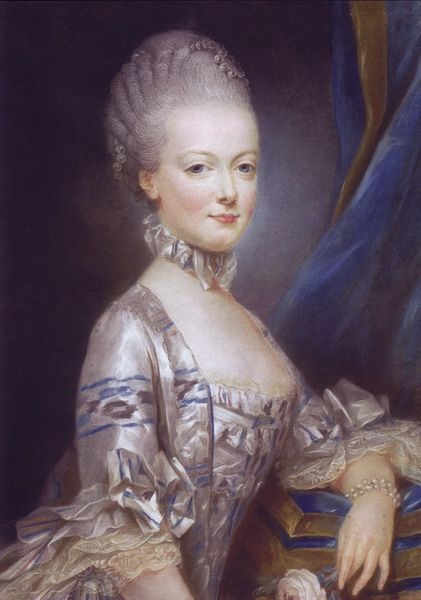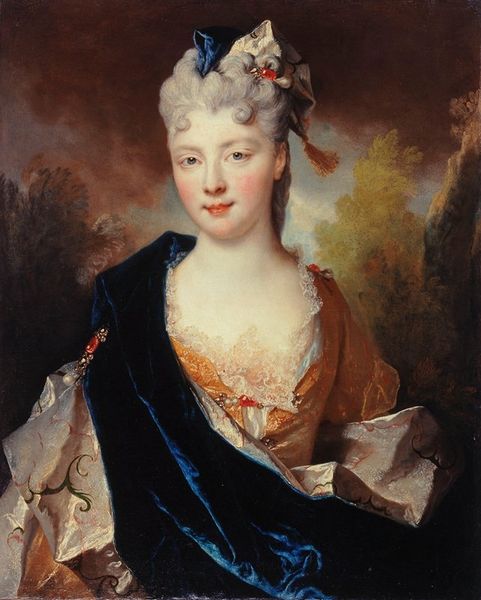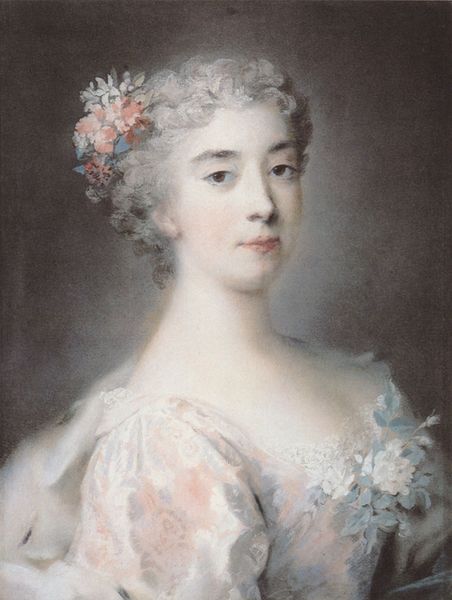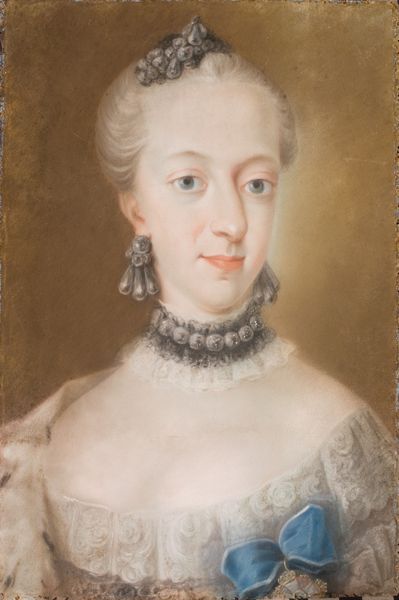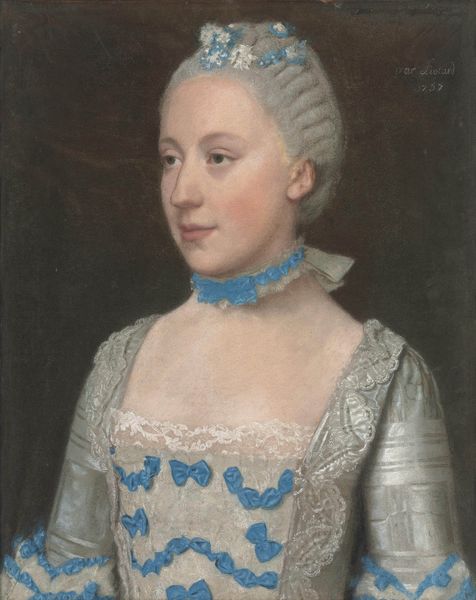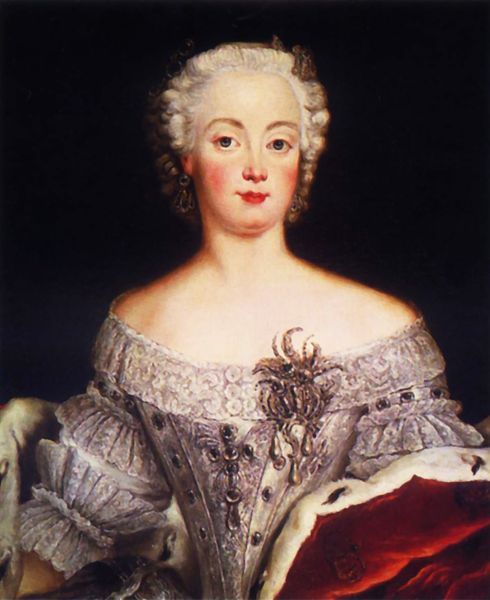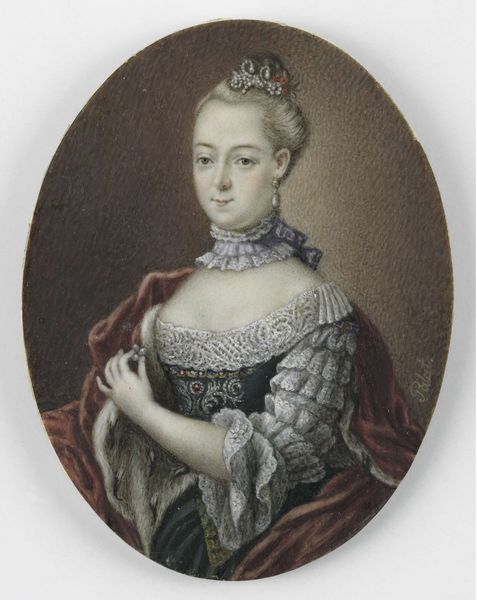
painting, oil-paint
#
portrait
#
painting
#
oil-paint
#
history-painting
#
academic-art
#
rococo
Copyright: Public domain
Curator: Here we have an intriguing portrait, identified as "Marie Josephe of Saxony," by Maurice Quentin de La Tour. The piece reflects a clear Rococo influence, though it’s unfortunately undated. Editor: Immediately, I’m drawn to the fabric. Look at the way the ruffles of her sleeves are articulated, the way the light interacts with that fine lace. You can almost feel the texture. Curator: Indeed, de la Tour really showcases his skill here. What strikes me is the painting's representation of aristocracy and status. Note her elaborate dress and the confident, yet reserved, expression on her face. This work certainly speaks to the social conventions surrounding royal portraiture in that era. Editor: I wonder, looking at those luxurious materials, what exactly went into the production? Where was that lace woven, who designed and sewed that elaborate gown? It’s so easy to get swept up in the elegance, but behind it lies a network of labor and consumption. The very pigment choices surely carry a socio-economic story too. Curator: A pertinent point! I believe these works served to reinforce power structures, portraying an image of wealth and divine right to rule. How else could the aristocracy legitimise itself? It’s no accident this kind of lavish detail was showcased. Editor: It’s fascinating to consider the actual process—mixing pigments, layering paint, each deliberate stroke to replicate the intricacies of fabric. De la Tour had a commission and was paid to spend this labor so that the monarchy would look appropriately impressive. It emphasizes art as *work*. Curator: Precisely. By presenting such elevated depictions, artists such as de la Tour played a crucial role in maintaining social hierarchies. They captured these moments in time in accordance with those very specific requirements. It served its sociopolitical purpose! Editor: Ultimately, the way this oil paint so skillfully represents fabric emphasizes the very human effort that produces everything, whether its the monarch's clothes or her portrait itself. Curator: Well, examining this piece in light of history certainly provides valuable insights into its context, and its broader historical narrative. Editor: And understanding its production, allows a deeper sense of its role within that context!
Comments
No comments
Be the first to comment and join the conversation on the ultimate creative platform.


